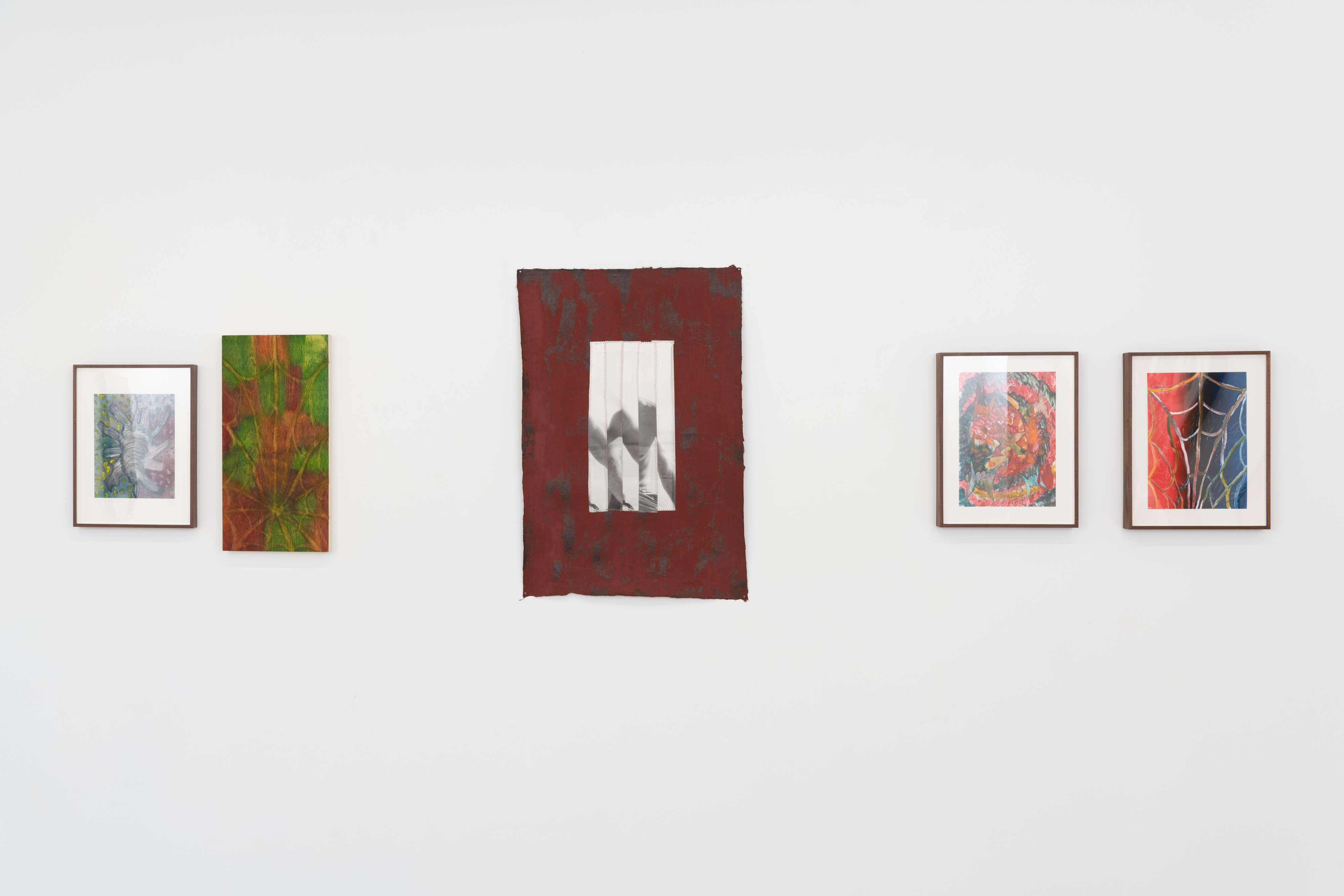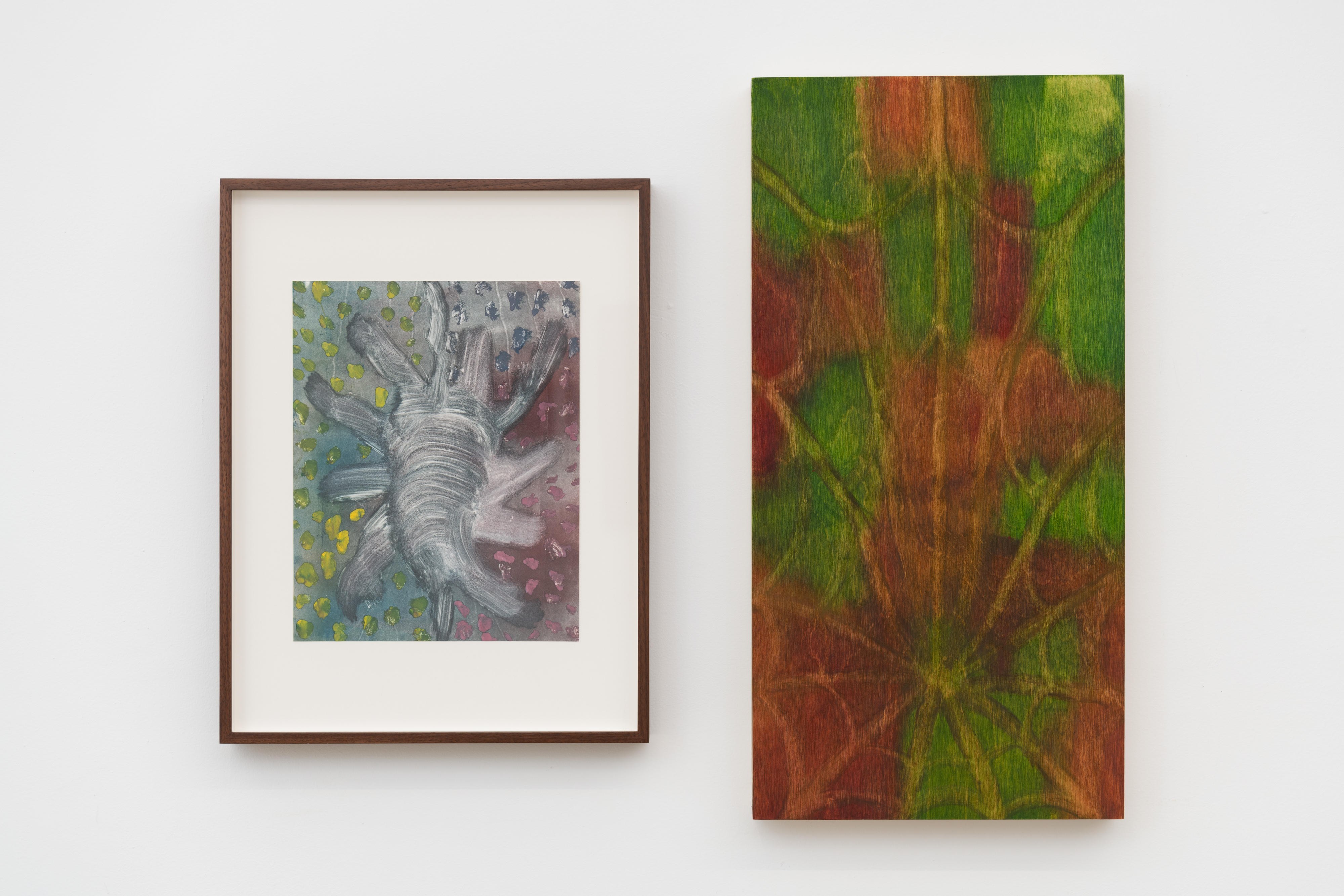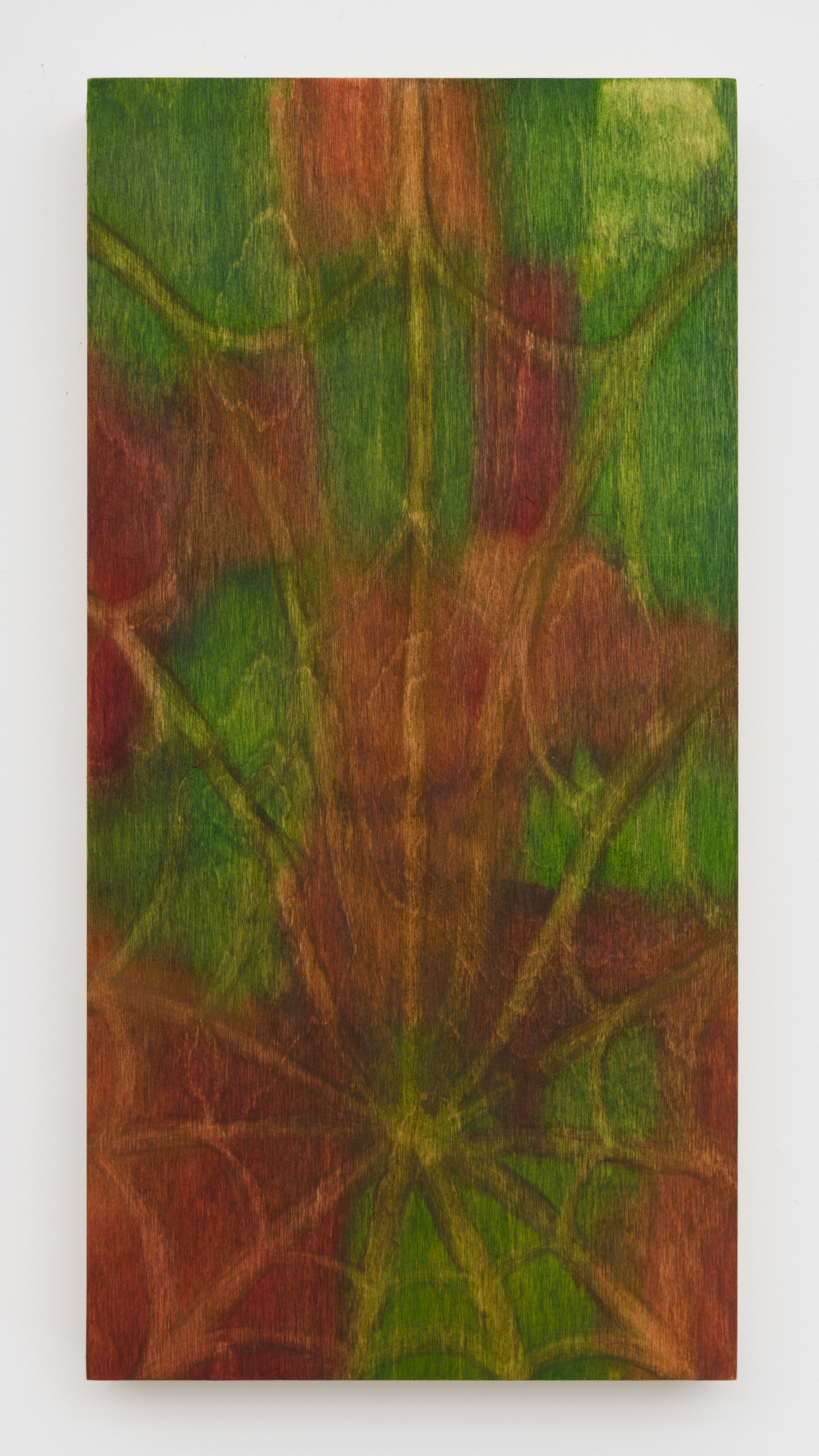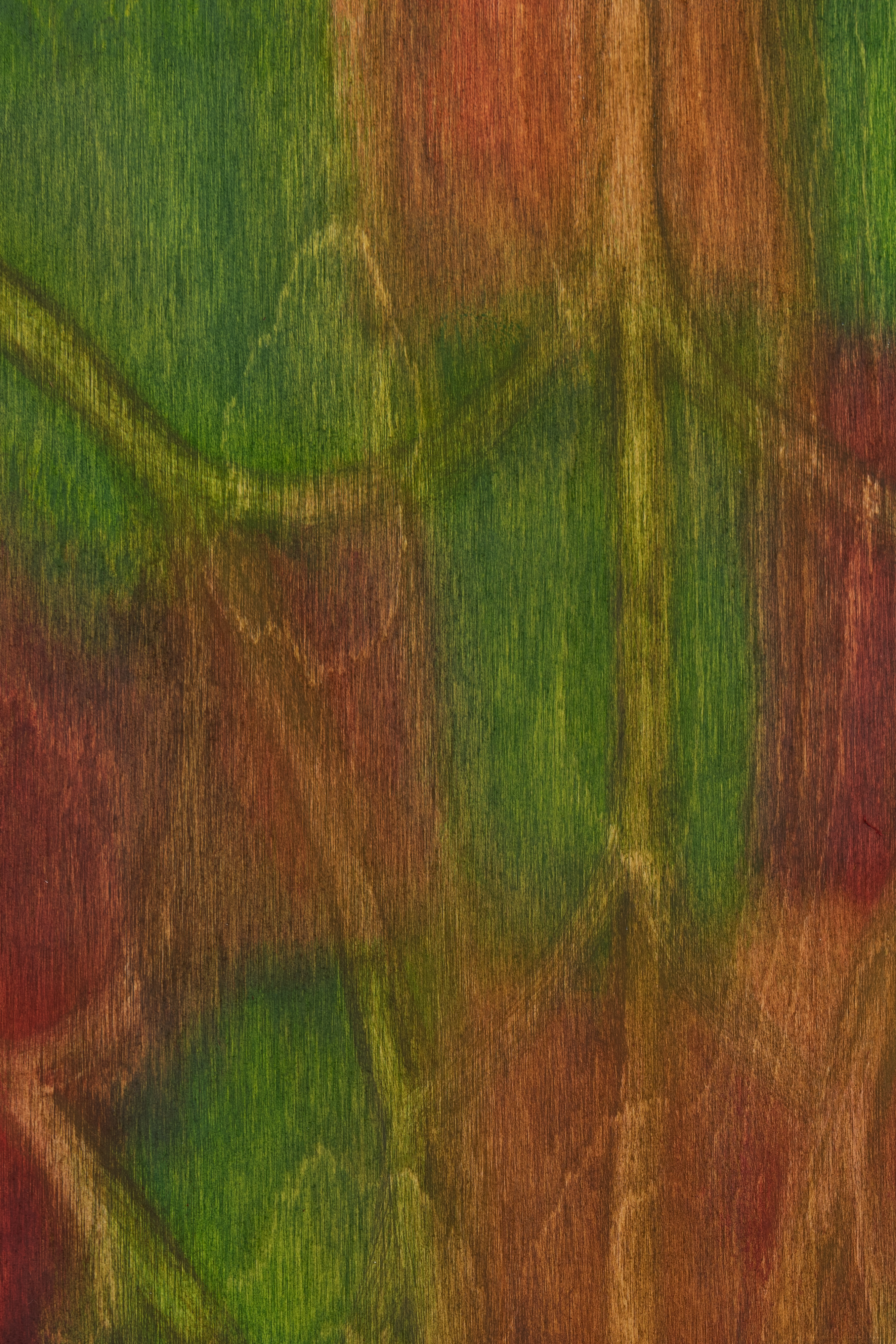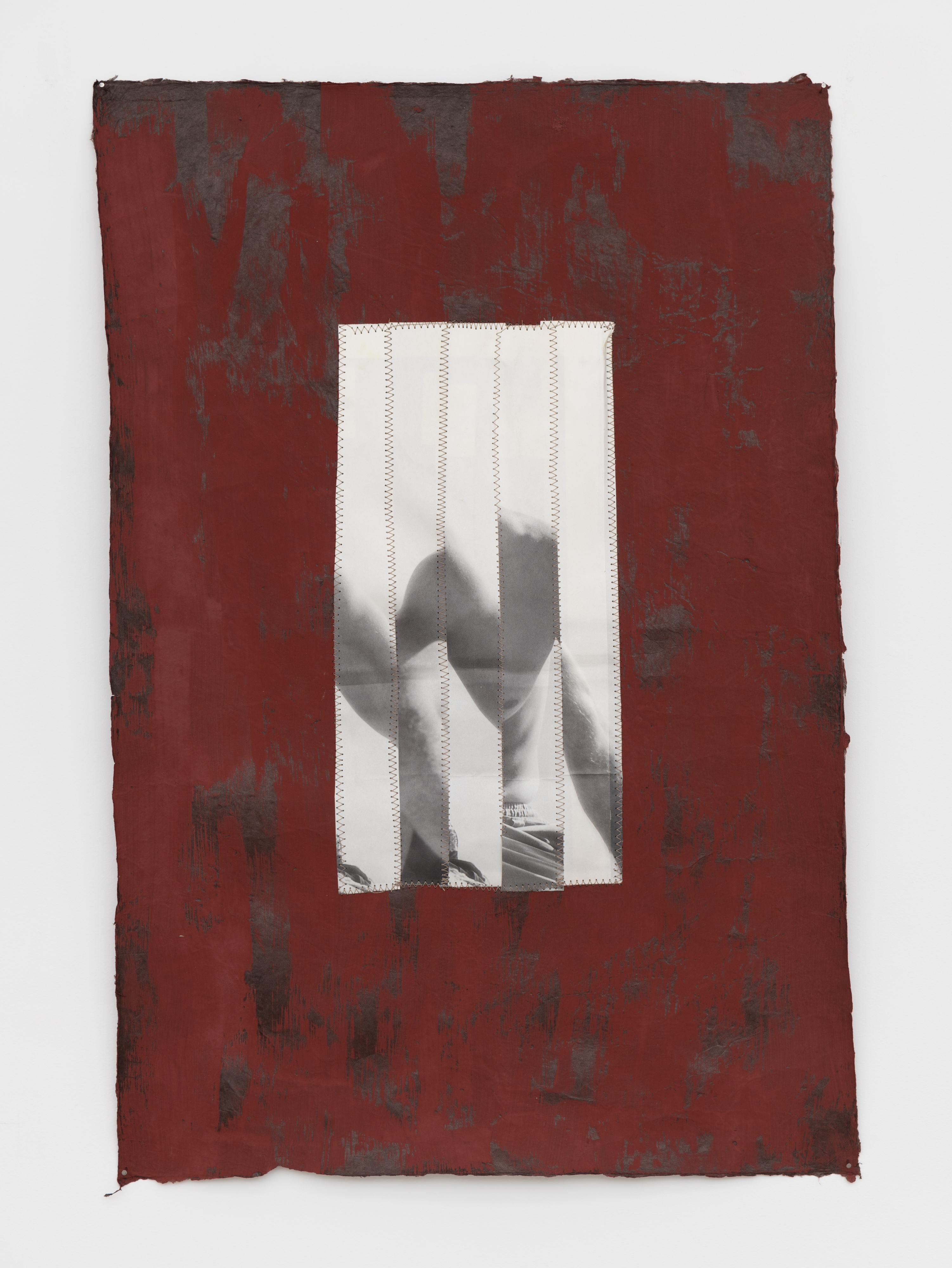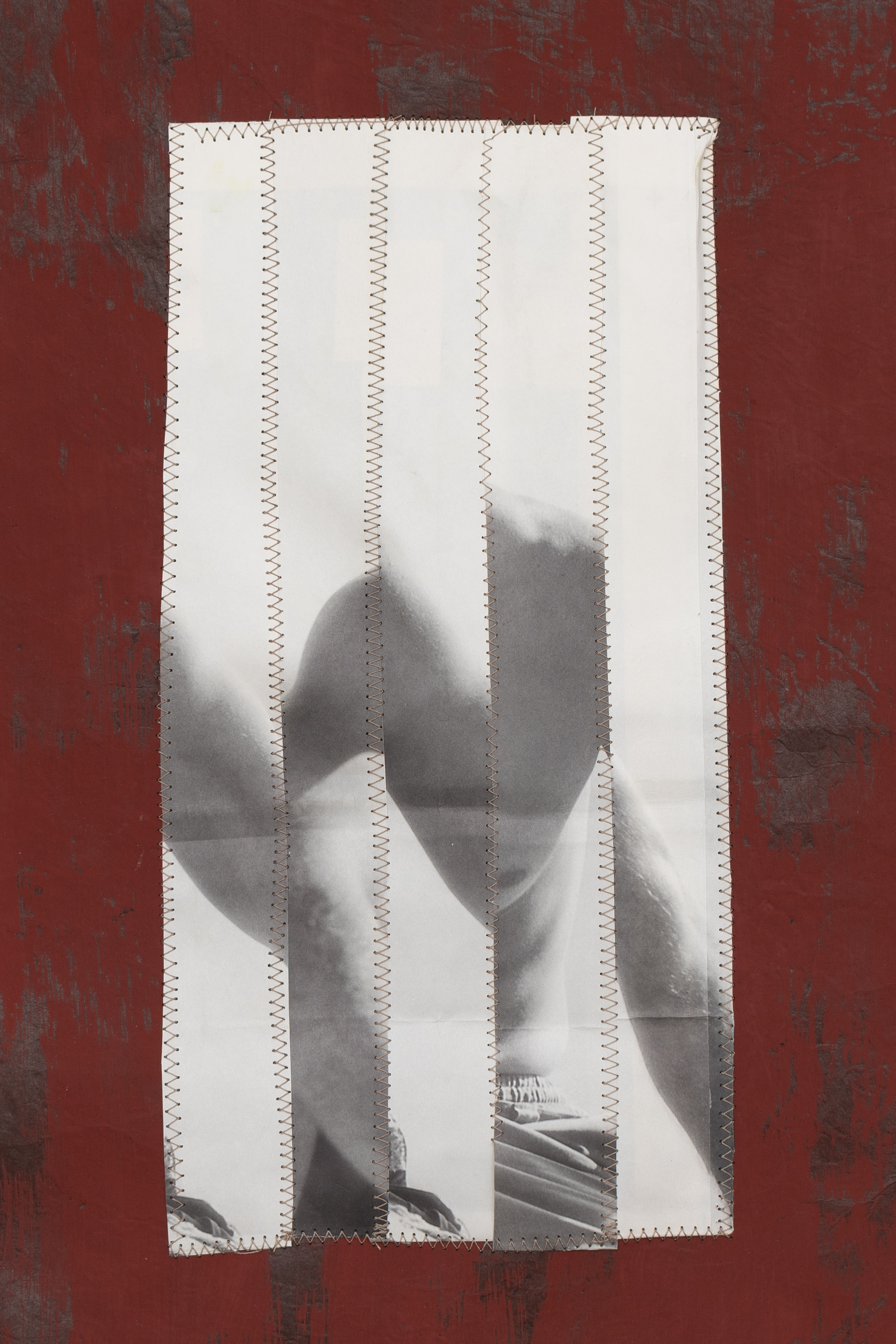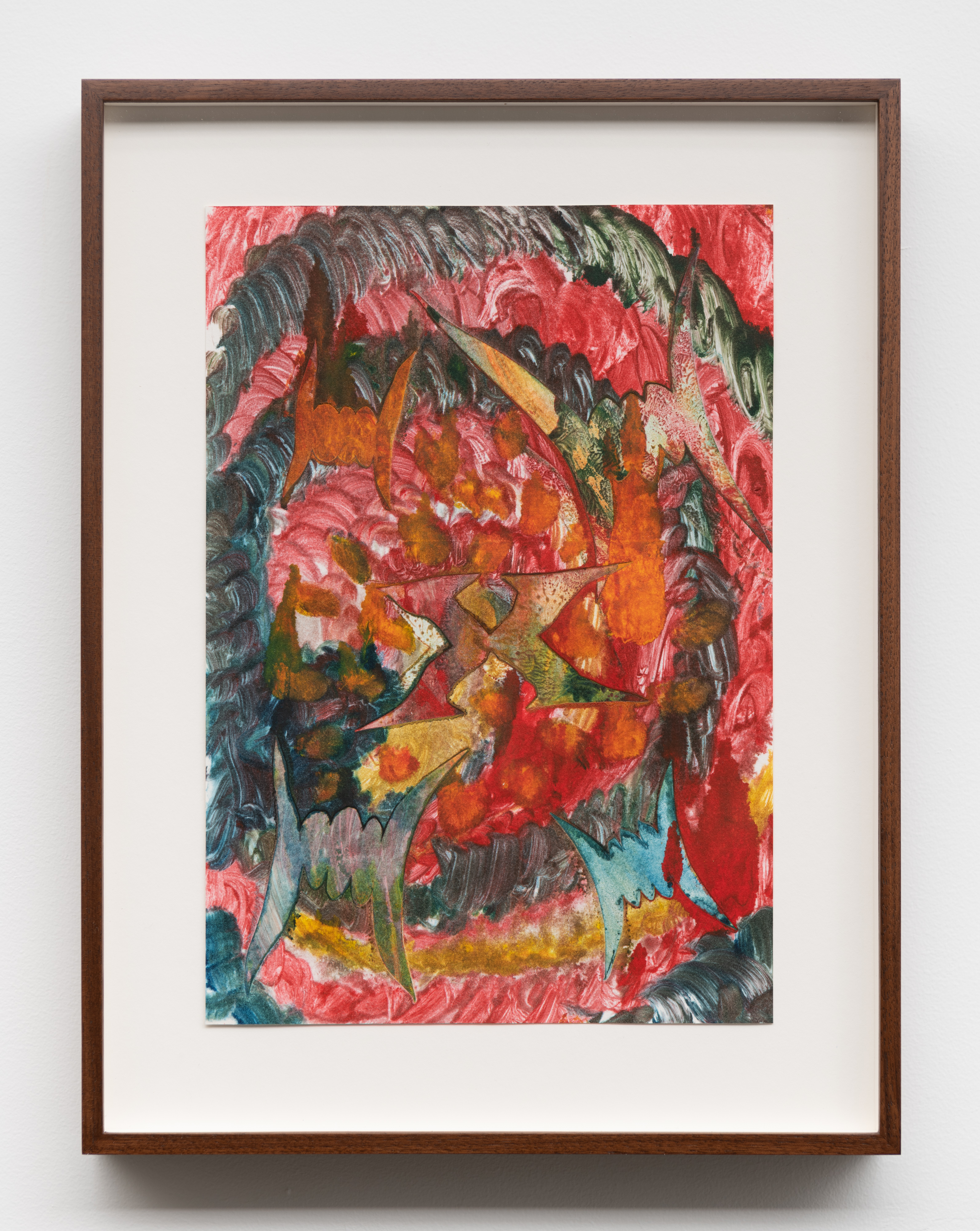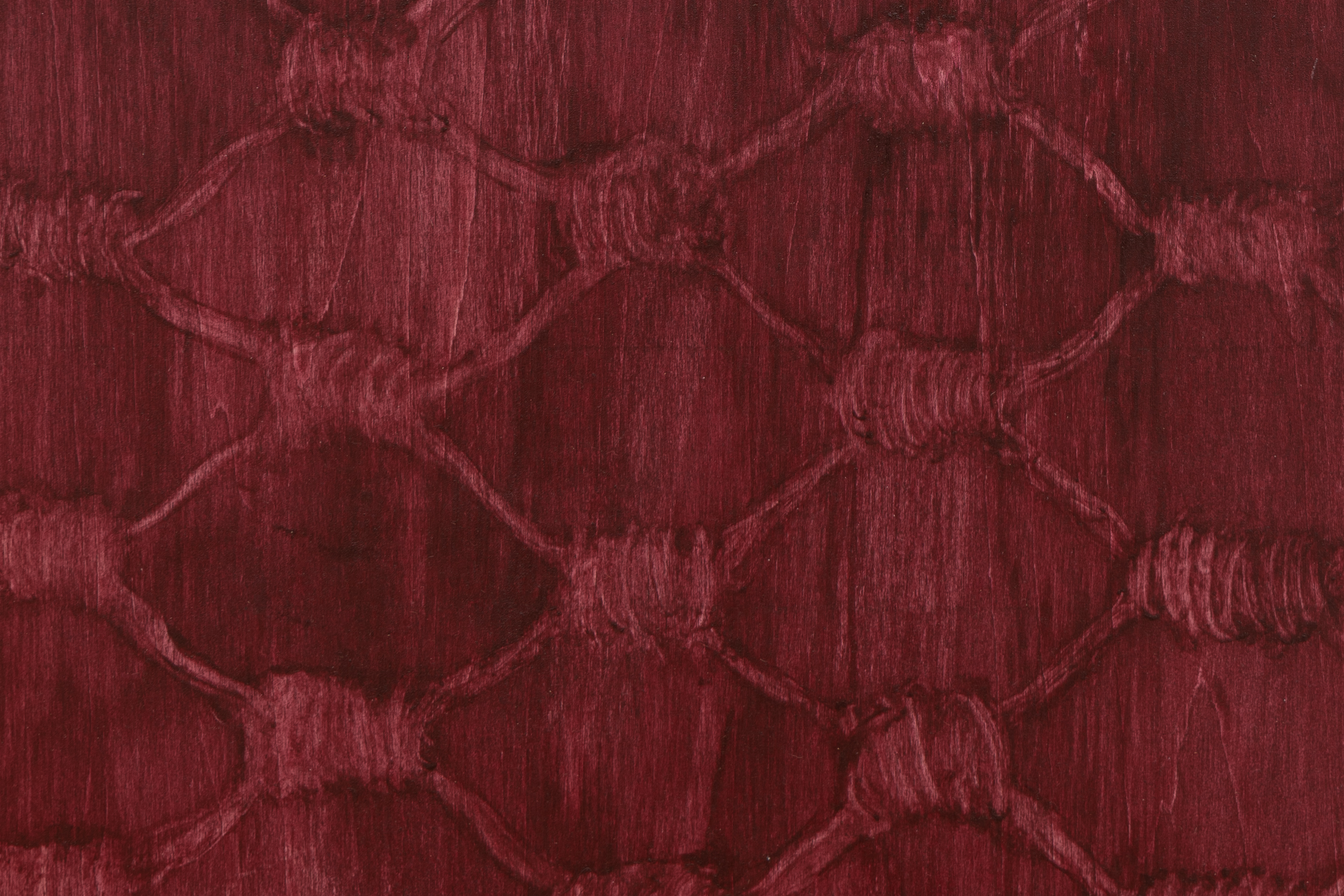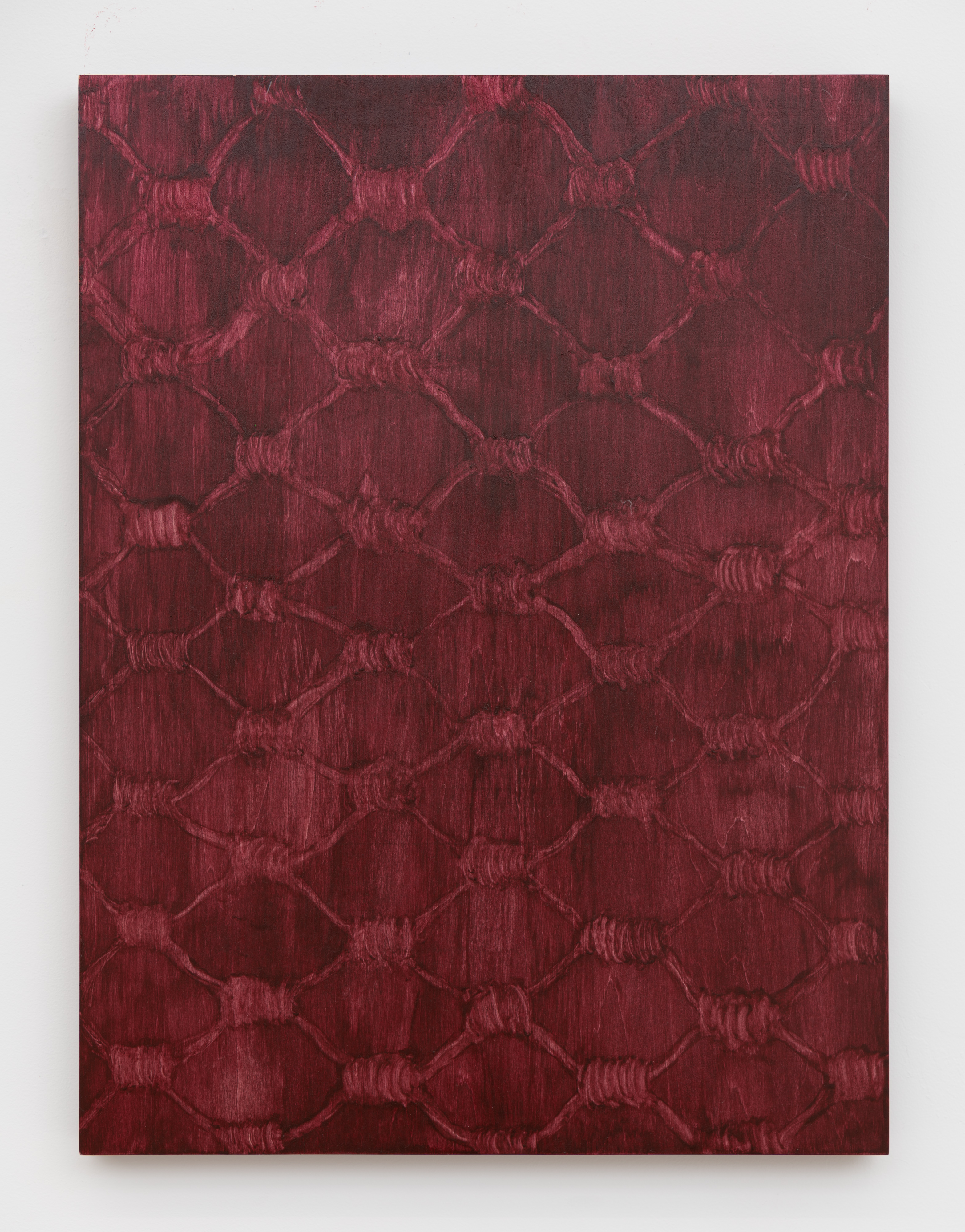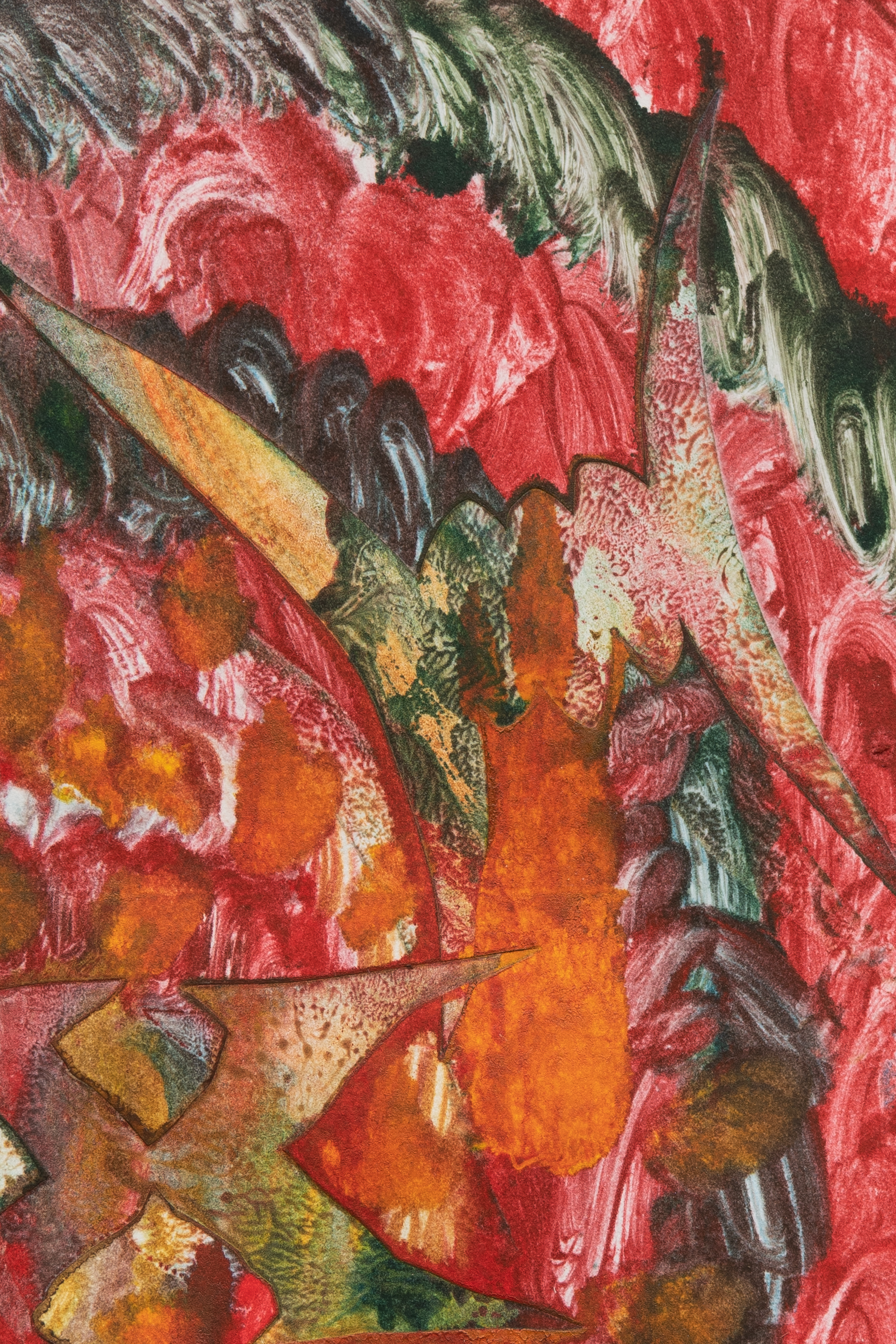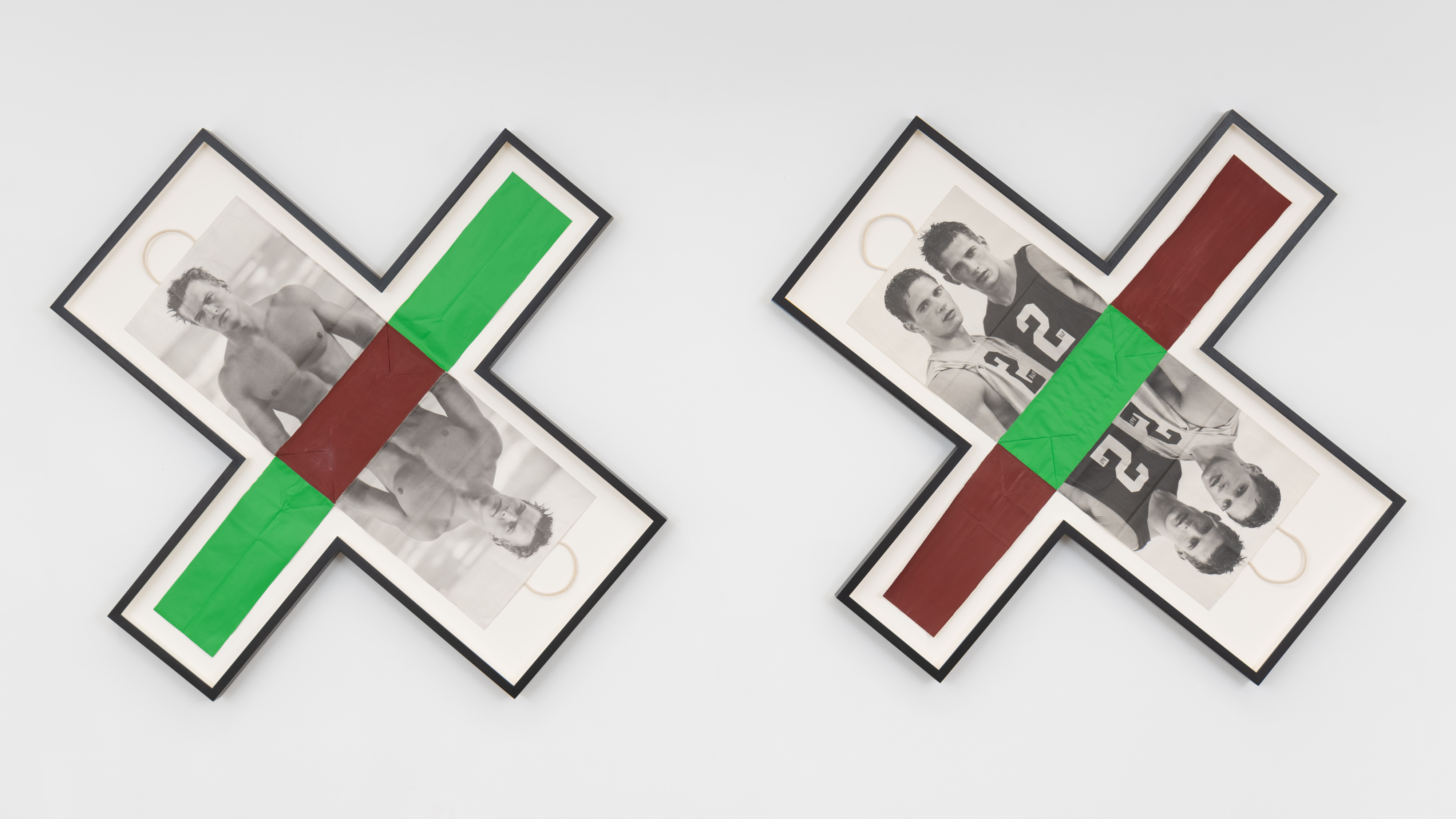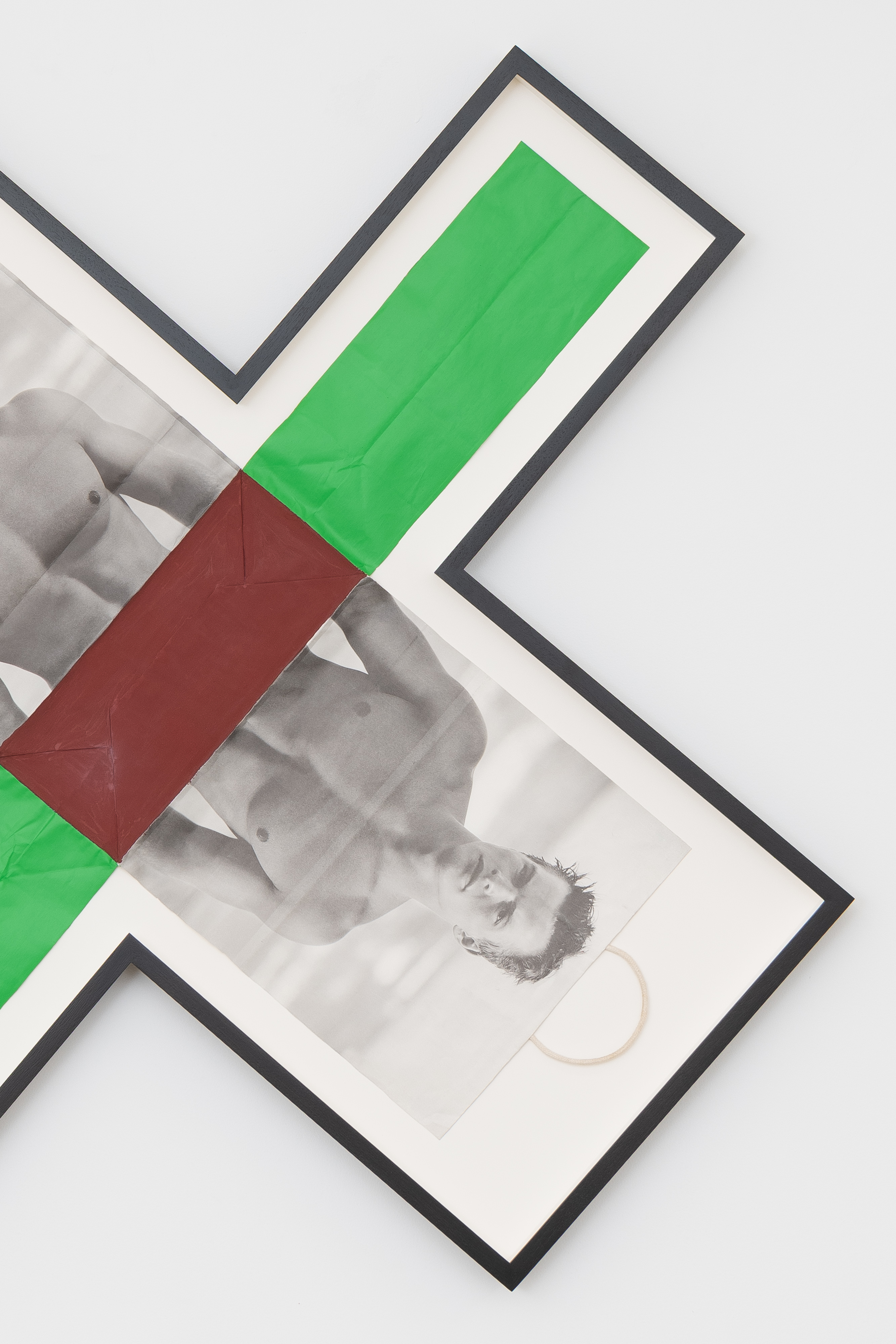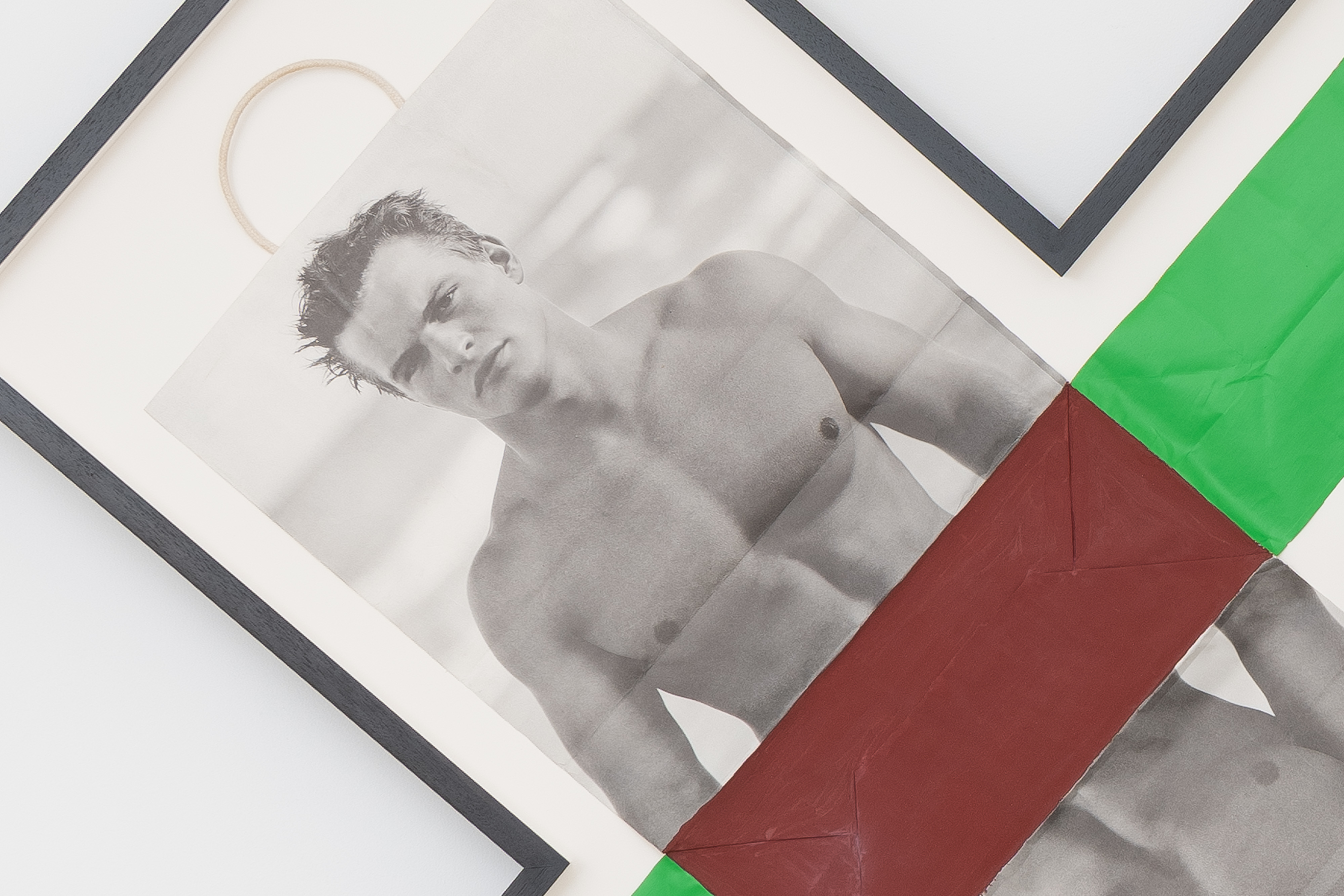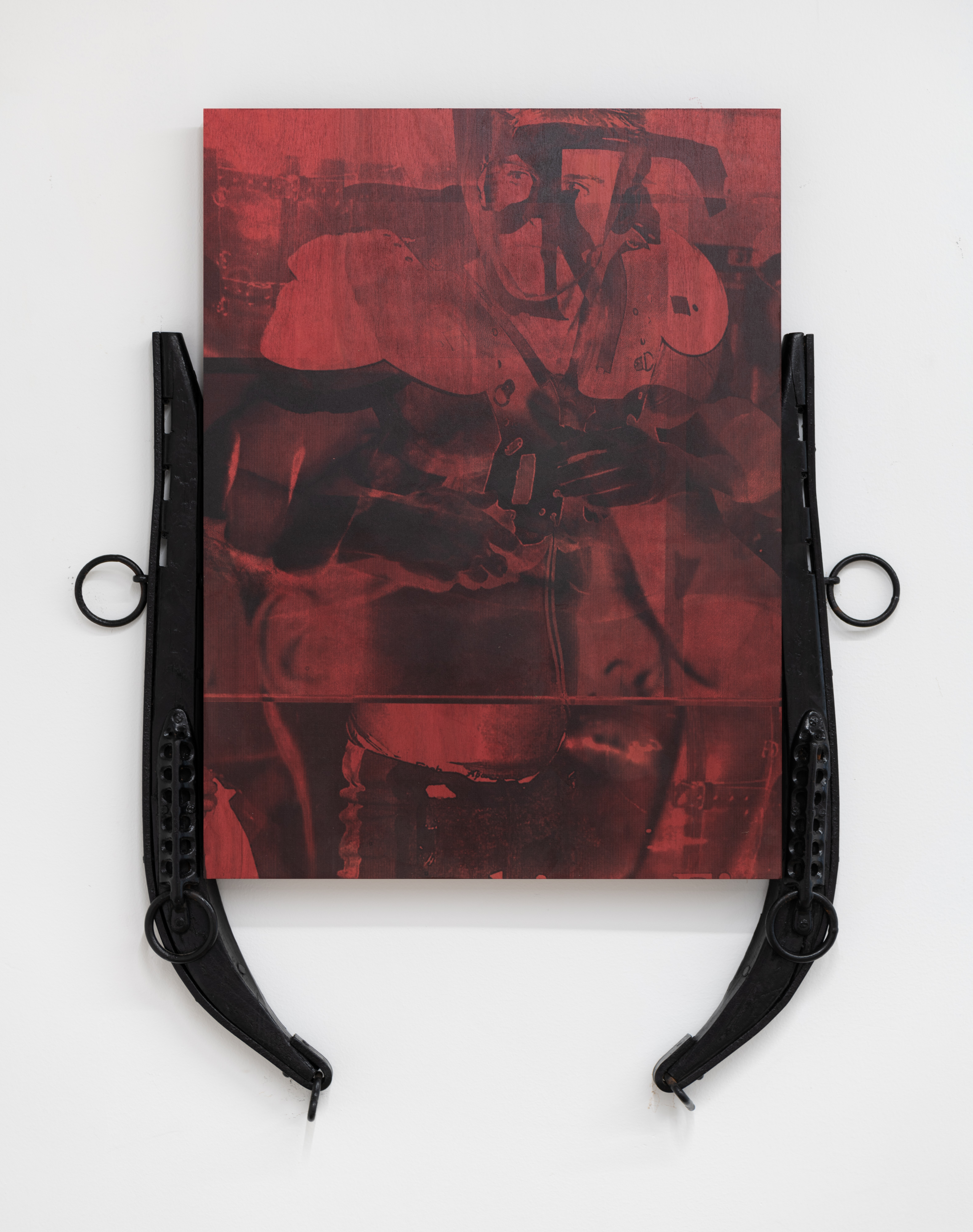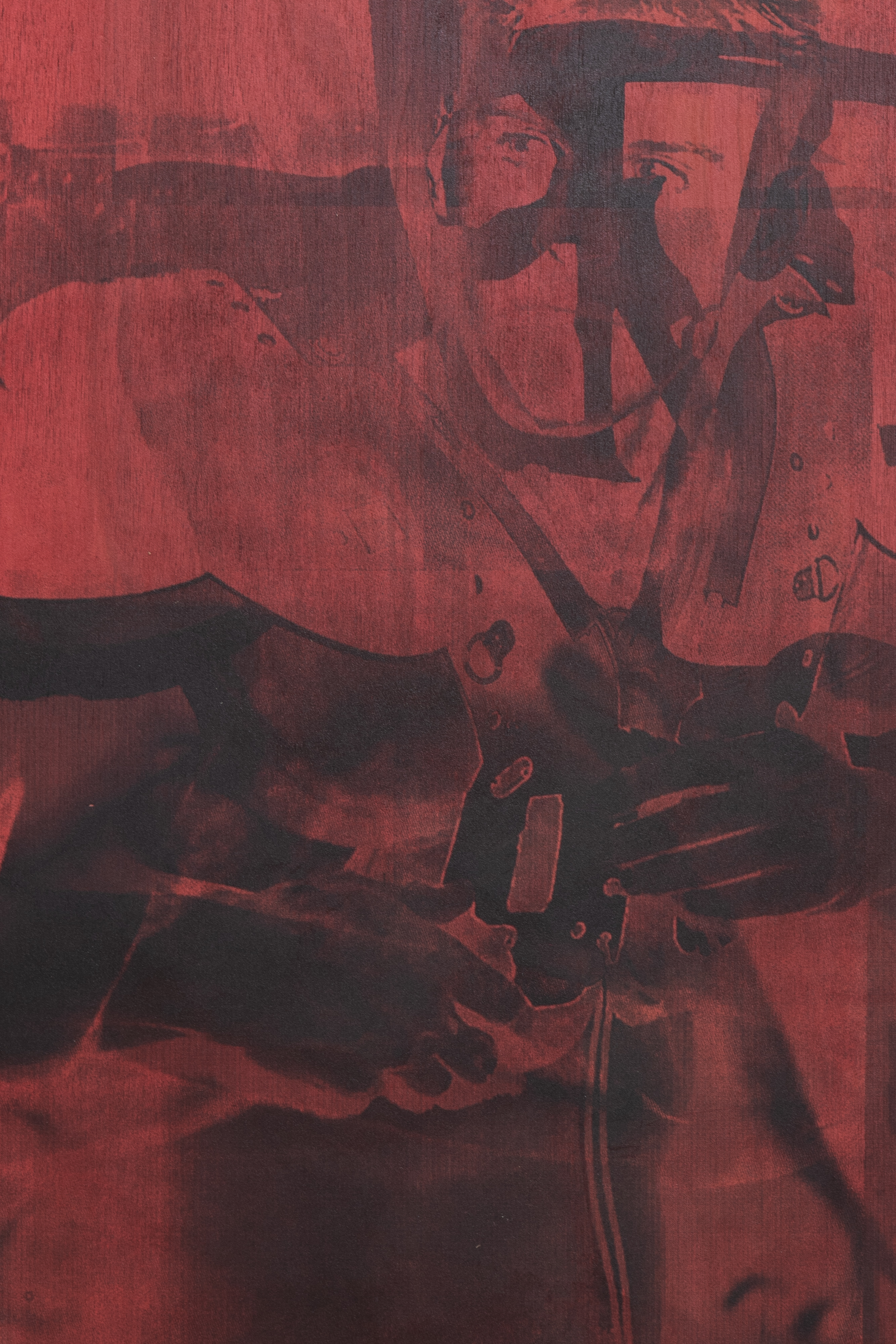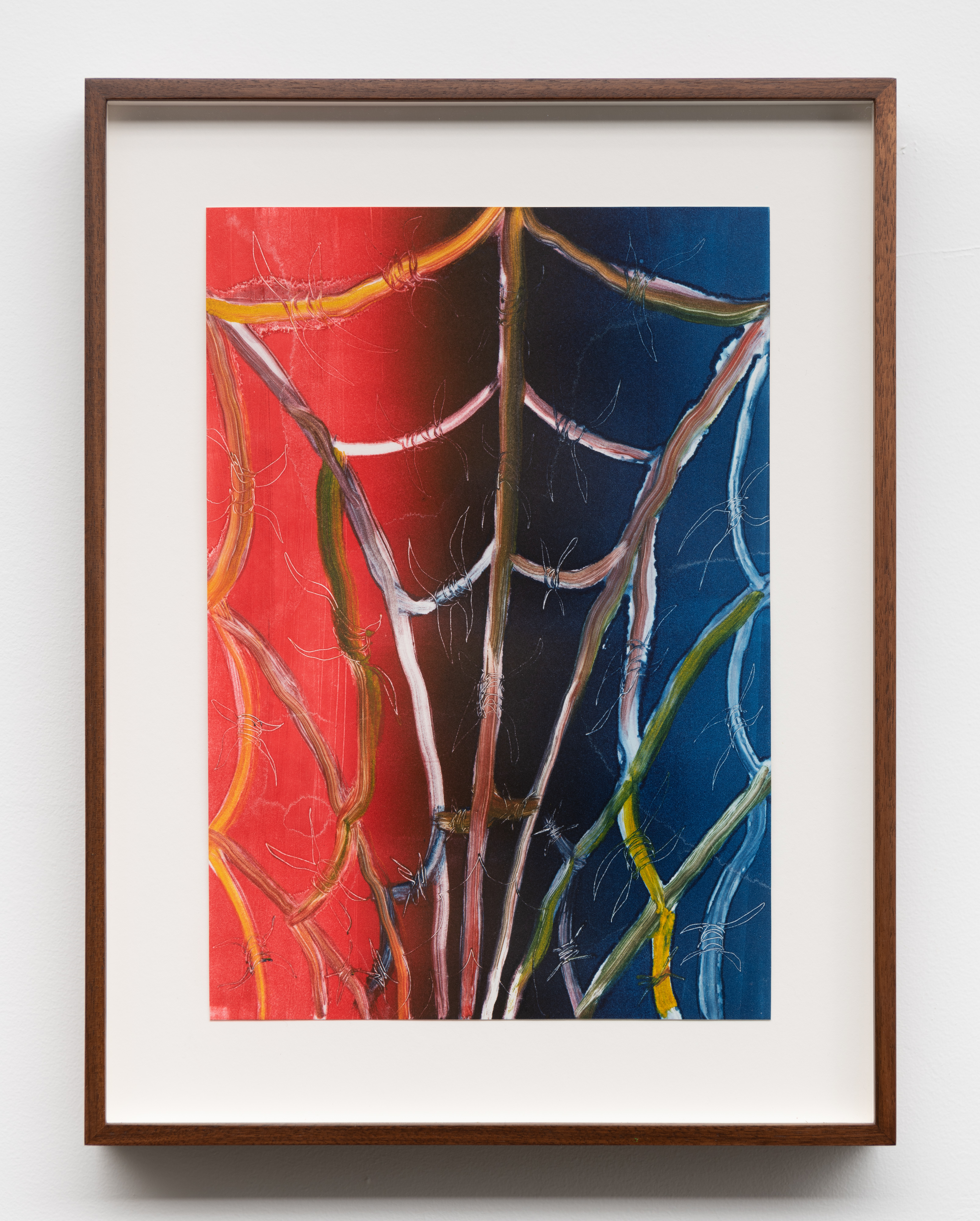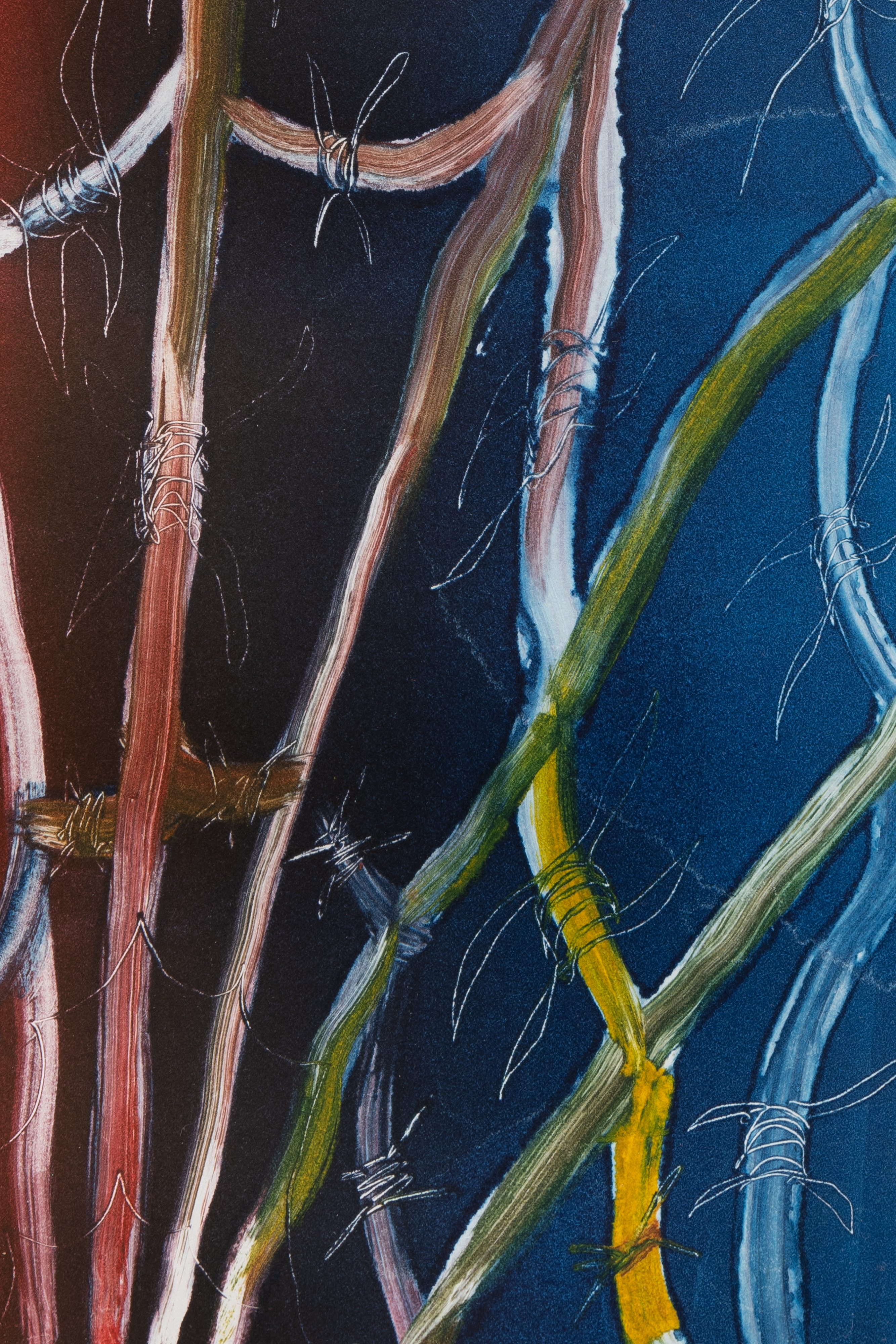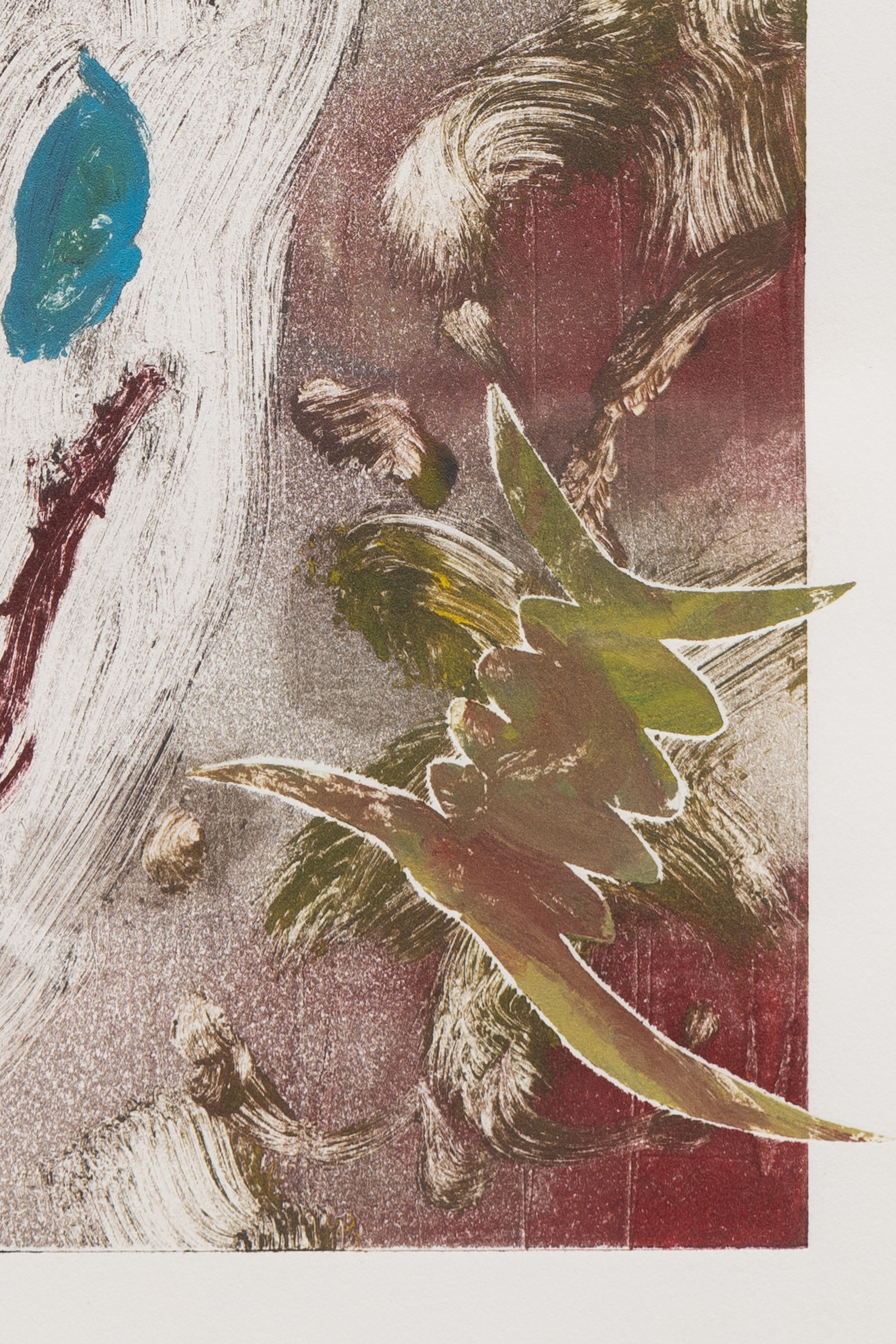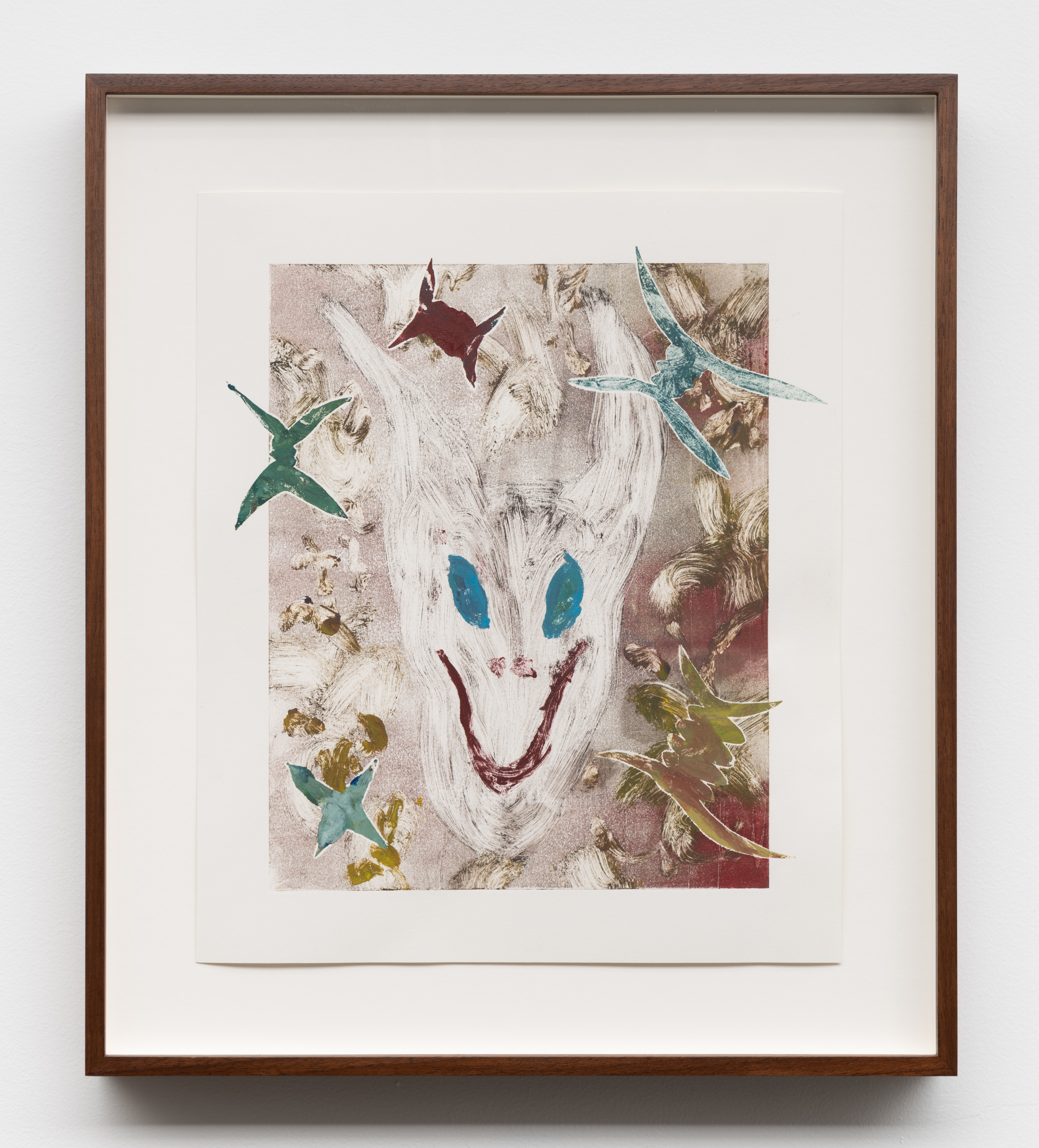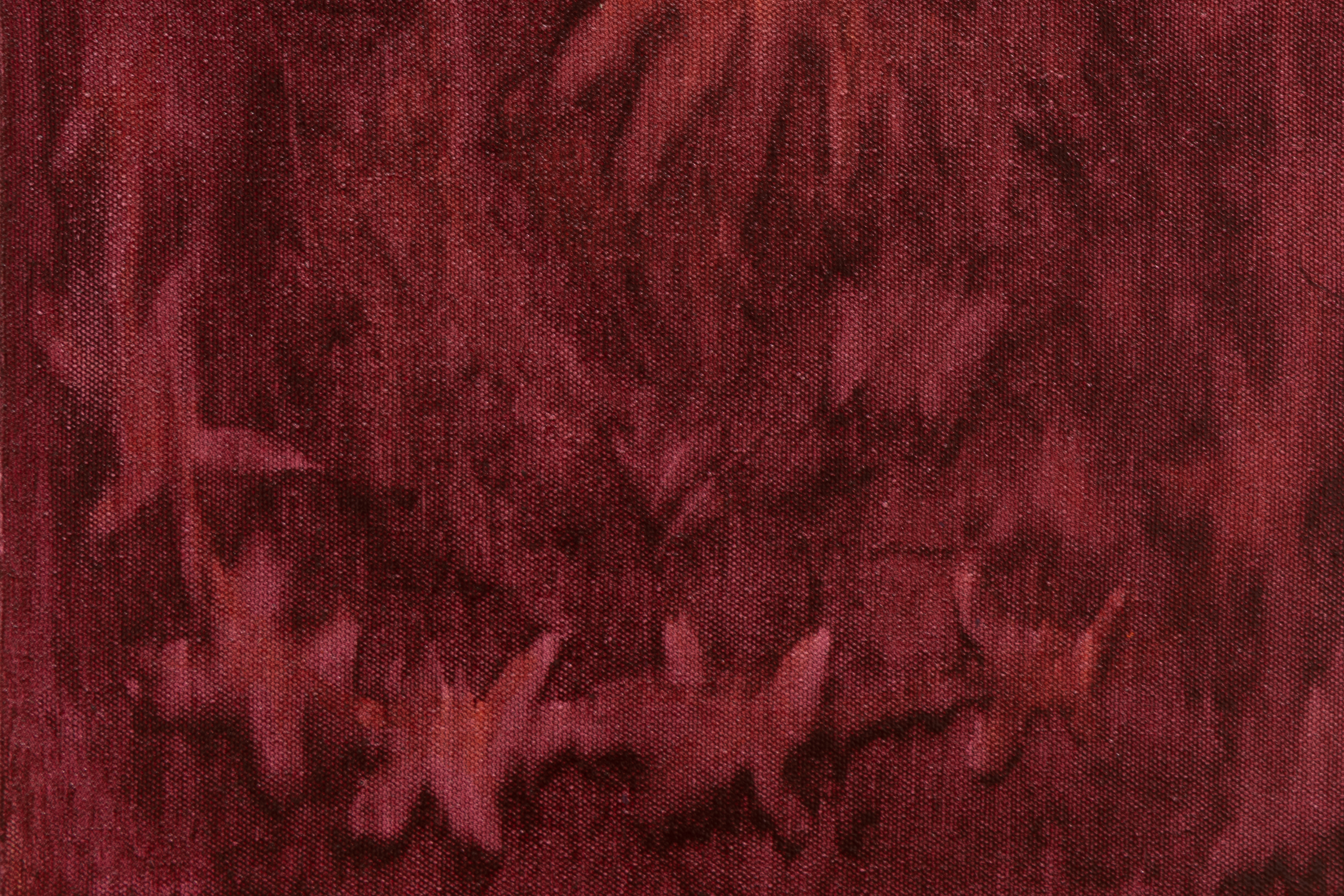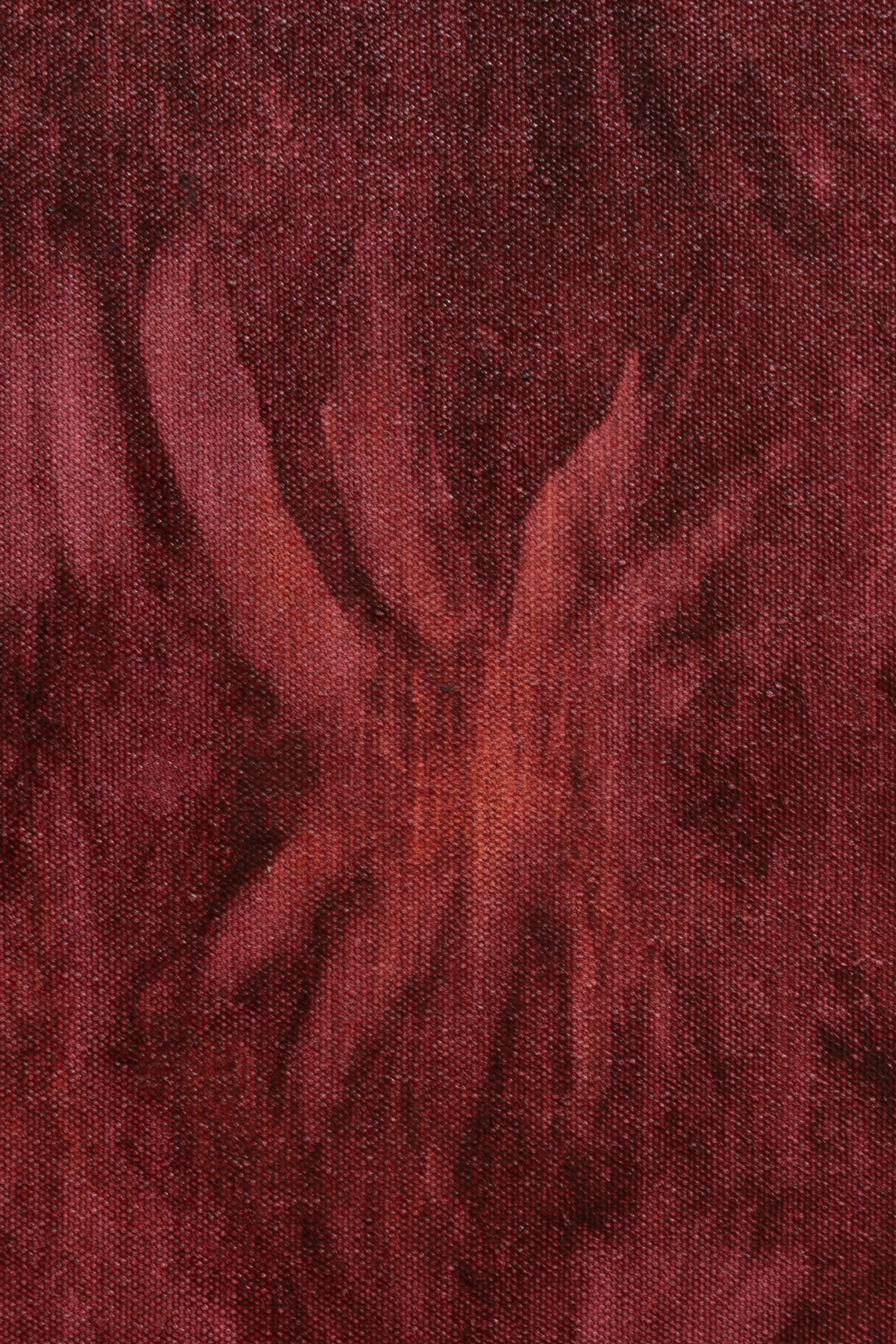In Love and Theft, Gray Wielebinski develops his ongoing investigation into the mythological and material foundations of the nation-state. Its altar-like centerpiece evokes the romantic image of American farmland through use of two colors: falu red, the earthy tone typically used to paint barns, and chroma key green, used for green screen filming and reminiscent of the unnerving sheen of a perfectly manicured lawn. Overlaying these colors onto disassembled shopping bags from the quintessentially American retailer Abercrombie & Fitch, Wielebinski invites reflection on the physical and economic histories lying behind an idealized national identity. Both colors are tools for the creation of fantasy, albeit in starkly opposed ways. Falu red, a milk paint, reflects the organic tones of the Earth’s landscape and is in this sense designed to operate as a non-color; chroma key green, on the other hand, is vividly unnatural yet made to disappear in the green screen process. The highly recognizable Bruce Weber-shot photographs adorning the bags, meanwhile, evoke the homoerotic undertones of normative masculinity.
Flanking Love and Theft’s eponymous centerpiece are a series of prints that take Wielebinski’s foray into the import of color to intense, dream-like heights. Through the medium of print, Wielebinski plays on the way particular images become enshrined in collective consciousness, denoting a sense of national identity. The exhibition’s title, lifted from the scholar Eric Lott’s canonical study of appropriation, captures the ambivalent feelings of desire, envy, delusion, and violence that undergird the concept of ownership. By manipulating these symbols—repeating, distorting, splicing, and recombining them—Wielebinski toys with the ideas of ownership and appropriation encoded in the show’s title. Here Wielebinski extends his interest in the aesthetics of fencing and the history of barbed wire, the tool by which the American landscape was domesticated by European colonizers. We find barbed wire in both familiar and unrecognizable states, in one case enlarged to a point of terrifying majesty suggestive of a tornado (thus recalling the ultimate futility of settler attempts to gain mastery over the natural landscape). Love and Theft foregrounds the images that haunt us, the past that cannot be buried, and the mutual implication of violence and possession.

